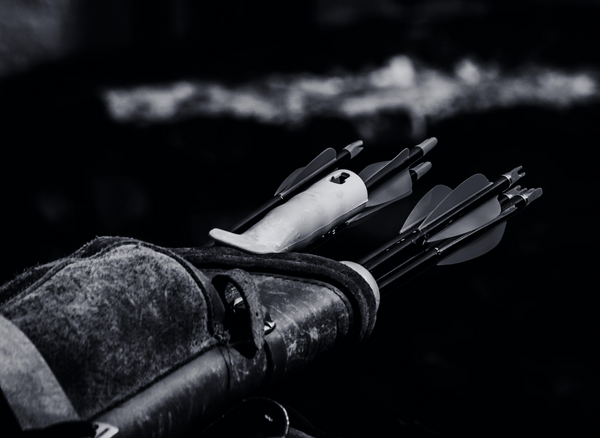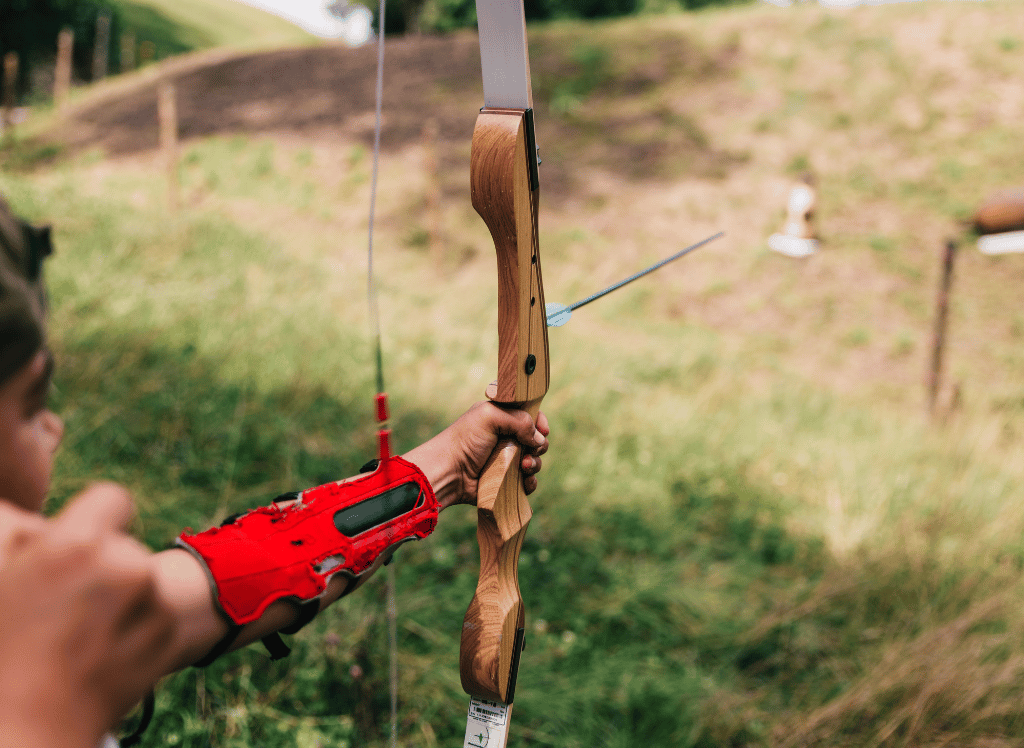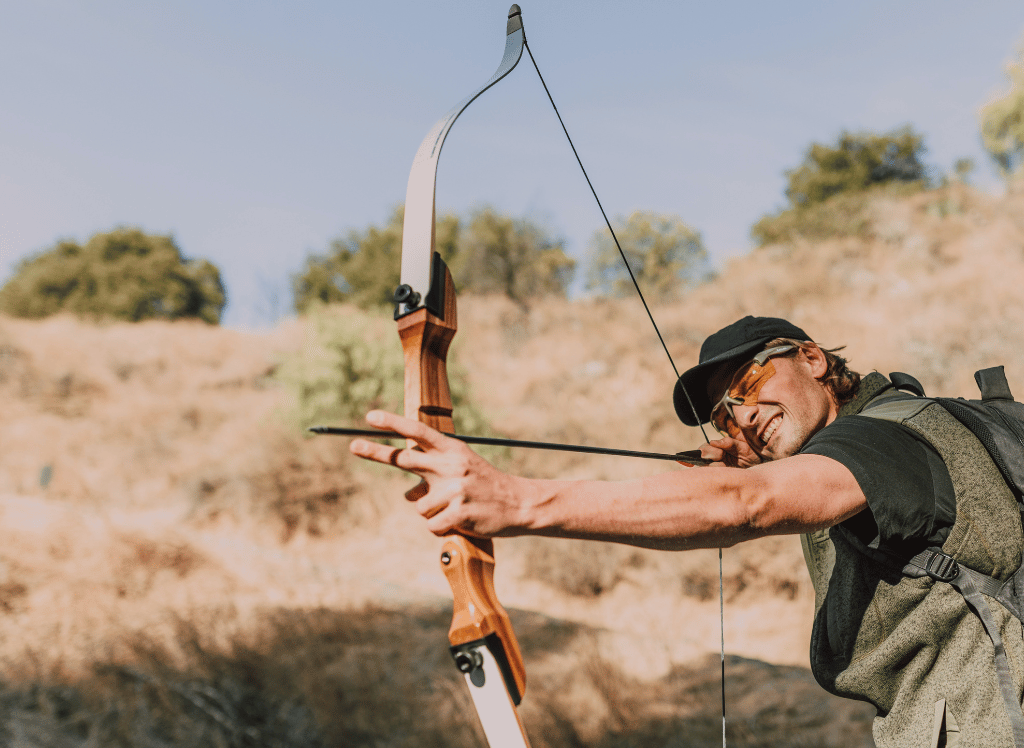The allure of archery has captivated human imagination for centuries, with its blend of precision, power, and elegance. Recurve bows, in particular, have captured the hearts of many archers, offering a unique combination of performance and tradition. Are you ready to embark on a journey through the world of recurve bows and uncover their secrets? In this post, we will explore the fascinating world of recurve bows, delving into their design, history, performance advantages, and the skills required to master them. Let us begin by understanding the basics of these remarkable bows, starting with the question: what is a recurve bow?
Keys
- Recurve bows offer distinct advantages in terms of power, maintenance and range when compared to other types of bows.
- Understanding the design and functionality is important for improving skills in archery pursuits.
- World Archery organizes recurve bow competitions that provide a platform for top archers to demonstrate their skills inspiring viewers around the world.
Understanding the Recurve Bow
A recurve bow is a type of bow that features limbs that curve away from the archer when unstrung, setting them apart from traditional bows. At its core, a bow functions by storing mechanical energy in its limbs as the string is drawn back and then releasing that energy when the arrow is released. The bow’s draw weight plays a crucial role in this process, and the supplementary curve on recurve bows facilitates additional strength, thereby augmenting power and range when shooting an arrow, unlike traditional bows.
Recurve bows have gained popularity among professional archers and beginners alike due to their:
- aesthetic appeal
- comfortable handling
- compact design, which provides the necessary draw strength while still being a shorter bow with better performance
Improving skills and achieving desired results in archery requires a solid understanding of how a recurve bow works.
Design and Functionality
The performance and functionality of recurve bows are attributed to their unique design. The curved limb tips are a key feature that sets them apart from traditional bows. The design of a recurve bow serves to minimize energy loss and optimize arrow speed, making them more efficient than traditional bows. The supplementary curve permits for a greater draw strength in recurve bows, thus augmenting range and power compared to traditional longbows.
The energy efficiency and compact design of recurve bows have made them a favorite among archers across various disciplines. These bows are often favored by archers in scenarios where extended weapons could be inconvenient, such as in brush and forest terrain or while on horseback. However, the materials used to construct recurve bows are subject to greater strain due to the recurved limbs, and the shot may be accompanied by more noise.
History and Evolution
Tracing its roots back to ancient times, the recurve bow’s history is rich, with records of its usage extending to Egypt and Asia as early as the second millennium BC. It is believed that the design of the recurve bow is credited to the Mongolians, who utilized it while riding on horseback. The curved tips of the bow provide distinct advantages in terms of power and accuracy. In antiquity, some of the most talented archers were so adept that they could shoot arrows while mounted on a horse, employing the finest traditional bow, the recurve, for optimal control when launching.
Recurve bows have been utilized in competitions since the founding of World Archery in 1931. Recurve has been the sole archery discipline featured in the Olympics since archery was reintroduced to the global stage at the Munich 1972 Games after a 52-year absence. Today, recurve bows continue to be widely used in prestigious competitions like the World Archery Championships, showcasing their timeless appeal and enduring relevance in the world of archery.
Comparing Recurve Bows to Other Bows
Insights into the performance advantages and skill requirements of recurve bows can be gained by comparing them with other bow types, like compound bows. Compound bows, for example, are distinct from recurve bows in terms of power, with the abrupt acceleration from the cams unwinding on a compound bow contributing to a slight increase in power with the shot. However, compound bows are more facile to be exact with, which may provide some advantages in terms of accuracy.
In contrast, recurve bows are usually more affordable than compound bows and demand less maintenance. Additionally, not all recurve bows are structured to permit attachments, unlike recurve bows, compound bows are designed to accommodate various accessories such as sights, stabilizers, quivers, and more. These differences highlight the unique characteristics and performance advantages of recurve bows in comparison to other types of bows.
Performance Advantages
Recurve bows offer several performance advantages, including greater energy efficiency and the ability to be crafted with thinner, lighter materials. A recurve bow is likely to produce superior speed results in comparison to longbows with analogous weights and arrows, making them particularly suitable for target archery and hunting. In terms of target distances, recurve archery targets are established at a distance of 70m, whereas compound archery targets are established at a distance of 50m.
These performance advantages make recurve bows an attractive choice for many archers, who appreciate their energy efficiency, speed, and compact design. As a result, recurve bows have found widespread use in various archery disciplines, from target shooting to hunting, showcasing their versatility and adaptability in different scenarios.
Skill Level and Learning Curve
The skill level necessary for utilizing a recurve bow can fluctuate contingent upon the purpose and target, with a base draw weight of 40 pounds suggested for hunting bigger game and a draw weight of 35 pounds for smaller game like turkey and rabbit. In any case, acquiring proficiency in archery with a recurve bow may require a considerable amount of time and practice, as it necessitates a higher level of technique and skill in comparison to compound bows.
This learning curve may be challenging for some, but the rewards are well worth the effort. Mastering a recurve bow can assist in refining one’s shot process and enhance one’s archery proficiency in the long run, requiring patience, commitment, and practice. The closeness of the process is rewarding, making recurve bows an excellent choice for those looking to hone their skills and achieve greater precision and outcomes in their archery pursuits.
Choosing the Right Recurve Bow
Choosing the appropriate recurve bow is a vital step towards a satisfying archery experience. There are several factors to consider when choosing the appropriate recurve bow for your needs and preferences, such as the purpose and usage, draw weight and length, and the material and construction of the bow. Consulting a professional before purchasing a recurve bow is highly recommended, as it can help you acquire a bow that is tailored to your specific requirements and preferences.
A careful consideration of these factors, coupled with professional advice, can help you choose a recurve bow that not only fulfills your needs but also boosts your archery performance and skills. A well-chosen recurve bow can provide you with an enjoyable and rewarding archery experience, allowing you to fully appreciate the unique characteristics and advantages of these exceptional bows.
Purpose and Usage
The intended purpose and usage of the recurve bow, whether it’s for target shooting or hunting, should be taken into account when making a selection. For example, novices seeking the most favorable outcomes would be advantaged by utilizing a recurve bow for target archery. On the other hand, archers typically strive to refine their abilities for either competitive purposes or hunting. In either case, the different draw weights and bow lengths suitable for various archery disciplines should be taken into account when choosing the right recurve bow for your needs.
Understanding the intended purpose and usage of your recurve bow will help ensure that you select a bow that is well-suited to your specific requirements and preferences. By choosing a recurve bow that aligns with your goals and needs, you can enjoy a more fulfilling and successful archery experience, whether you’re shooting targets or hunting game.
Draw Weight and Length
Choosing the right draw weight and length is key to ensuring optimal performance and comfort with your recurve bow. The bow’s draw weight is the amount of force required to be applied to the string in order for the bow to be at its optimal capacity. For hunting bigger game, a base draw weight of 40 pounds is suggested, while a draw weight of 35 pounds can be adequate for smaller game like turkey and rabbit. It is also essential to be able to hold the bow stable at full draw for extended periods.
Draw length is the distance between grip and nock point when the bow is drawn. It should be measured at full draw for precise results. It can be estimated by dividing the wing span by 2.5, but utilizing the services of a pro-shop is suggested to ascertain the precise draw length.
By determining the optimal draw weight and length for your needs, you can ensure that your recurve bow provides the best possible performance and comfort during your archery pursuits.
Material and Construction
The performance and durability of a recurve bow are significantly influenced by its materials and construction. A recurve bow is constructed with a selection of materials, such as:
- True bow woods
- Bamboo
- Composite materials like carbon foam
- Fiberglass
- Graphite composites
- Boron composites
- Kevlar
- Resins
- Plastics
- Glues
The limbs of a recurve bow should ideally be composed of fiberglass, as this material provides optimal performance and durability.
When selecting a recurve bow, it’s important to consider the quality of the materials and construction, as these factors can greatly impact the bow’s performance and longevity. By choosing a recurve bow made from high-quality materials and featuring a well-constructed design, you can enjoy a more reliable and rewarding archery experience, ensuring that your bow performs optimally and lasts for many years to come.
Recurve Bow Maintenance and Accessories
Proper maintenance of your recurve bow and investment in suitable accessories can greatly enrich your archery experience.
Proper care and storage of your recurve bow will ensure its longevity and performance. Popular accessories such as:
- Arrows
- Arrow rests
- Bow sights
- Stabilizers
- Quivers
- Bow strings
can help improve your archery skills and enjoyment.
By taking the time to maintain your recurve bow and exploring the wide range of accessories available, you can further enhance your archery experience and achieve greater success in your pursuits. If you’re a beginner, investing in your recurve bow’s maintenance and accessories can help you get the most out of this remarkable instrument.
Proper Care and Storage
Proper care and storage are vital to maintain the performance and longevity of your recurve bow. Key steps include:
- Unstringing the bow after use and before storage.
- Inspecting the limbs and riser for any damage or misalignment.
- Drying the bow and its accessories thoroughly to prevent moisture damage.
- Regularly inspecting and maintaining the bow for any signs of damage.
- Using a bow case, either soft or hard, for safe storage and protection.
By following these proper care and storage techniques, you can ensure that your recurve bow remains in optimal condition and continues to perform at its best. A well-maintained recurve bow will not only provide you with a more enjoyable archery experience but will also help you avoid potential issues and costly repairs in the long run.
Popular Accessories
A variety of popular accessories for recurve bows are available that can elevate your archery experience and boost your performance. Some of these accessories include:
- An arm guard
- A glove or finger tabs
- An arrow rest
- A broadhead wrench
- Bow string wax
These accessories can provide additional protection, support, and convenience during your archery sessions, helping you achieve greater success and enjoyment in your pursuits.
By investing in the right accessories for your recurve bow, you can further improve your archery skills and performance, making each session more enjoyable and rewarding. Whether you’re a beginner or an experienced archer, these popular accessories can help you get the most out of your recurve bow and enhance your overall archery experience.
Recurve Bow Competitions and World Archery
Competitive archery provides a thrilling and challenging arena for those passionate about recurve bows. Recurve bow competitions and major tournaments organized by World Archery showcase the skills and talents of archers from around the globe, providing an exciting stage for those who have honed their craft with this remarkable bow.
From the prestigious World Archery Championships to the Paralympic Games, recurve bow archery continues to captivate audiences and inspire new generations of archers. By participating in or following these competitions, you can immerse yourself in the exhilarating world of competitive archery and witness the incredible achievements of the top recurve archers in the world.
Competition Formats
Competition formats in recurve archery, encompassing individual matches, team matches, and qualification rounds, present their own unique challenges and scoring systems. In these formats, archers shoot a series of matches in groups, with each match comprising a certain number of sets or ends, wherein archers shoot a specific number of arrows. Target distances for recurve archery vary depending on the competition, but generally range from 18 to 90 meters, offering a diverse range of challenges for competitors.
By understanding and mastering the various competition formats for recurve archery, you can better prepare yourself for the rigors and excitement of competitive events. Whether you’re a novice or an experienced archer, participating in these competitions can help you further develop your skills and push the boundaries of your potential in the world of recurve bow archery.
Top Recurve Archers and Achievements
World-leading recurve archers have achieved outstanding feats, demonstrating their remarkable talent and dedication to the sport. Marcus D’Almeida, Kim Woo-jin, and Florian Unruh are among the highest-ranked recurve archers, with achievements such as Olympic medals, world records, and World Championship titles under their belts.
By celebrating the achievements of these top recurve archers, we can draw inspiration and motivation to continue refining our own skills and pushing the limits of our potential in the world of archery. Whether you’re just starting on your recurve bow journey or are an experienced competitor, the success of these talented archers serves as a reminder of the incredible heights that can be reached through dedication, perseverance, and passion for the sport.
Recurve Bow FAQs
When it comes to buying a recurve bow, there is so much for you to learn. You may have questions about the different types of bows, features to consider or even just how to pick the perfect bow for yourself. Not knowing what you're looking for could lead you down a long road of frustration and wasted money on the wrong recurve bow. That’s why we created our Recurve Bow FAQ section. We want to help equip you with all the information and tools needed make an educated purchase - so you can go out and have fun honing your archery skills with confidence that you’re using the right bow. Please browse through our FAQ section to learn more.
What is the difference between a standard bow and a recurve bow?
Recurve bows have their limbs curved away from the archer, which increases draw strength and increases range and power. Additionally, all draw weight is held by the archer when using a recurve bow. Compared to straight-limbed bows, a recurve stores and delivers energy more efficiently to the arrow.
Which is better recurve or compound bow?
Overall, compound bows are generally better than recurve bows as they are more accurate and easier to use for competition shooting.
Is a recurve bow good for beginners?
A recurve bow is a great choice for beginners as they are easy to find, simple to use and very forgiving when shooting.
What makes a bow recurve?
A recurve bow is a type of longbow with curved limbs that tip away from the archer, providing additional strength. This form was often preferred by archers because it allows for a shorter bow than the simple straight limb bow while still providing the same arrow energy, making it ideal in environments where long weapons could be cumbersome.
What is the primary benefit of a recurve bow?
The primary benefit of a recurve bow is its smaller size and better performance compared to traditional longbows.
Summary
There is no denying that recurve bows remain a powerful and attractive instrument to this day. While challenging and certainly requiring devotion, the rewards one can gain from mastering the recurve bow and its desires are inexhaustible. Whether seeking adventure in their backyards or medals on the international stage, heeding the advice of archers who have come before them will help expand the horizons of any modern-day recurve bow enthusiast. Good luck to all aspiring archers and happy shooting!
We have explored recurve bows, delving into their design, history, performance advantages, and the skills required to master them. We have also discussed the importance of choosing the right recurve bow and maintaining it properly, as well as the exciting realm of competitive archery and the achievements of some of the world’s top recurve archers.
As you embark on your own journey with a recurve bow, remember that patience, dedication, and practice are the keys to success. With the right bow, the right mindset, and the right guidance, you can unlock the full potential of this remarkable instrument and achieve great heights in the world of archery. May your journey with the recurve bow be as thrilling and rewarding as the ancient art itself.








